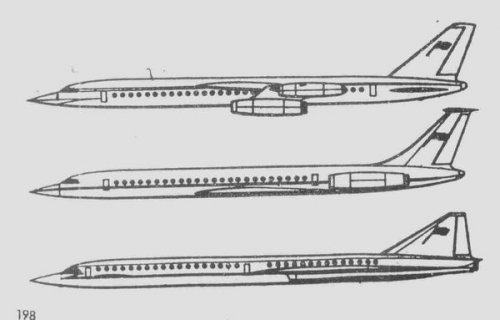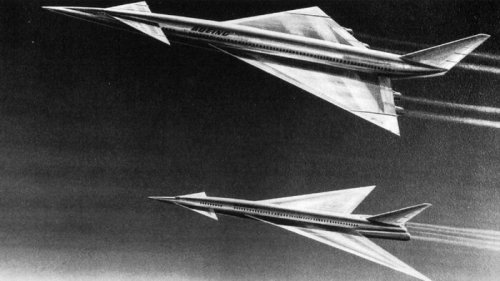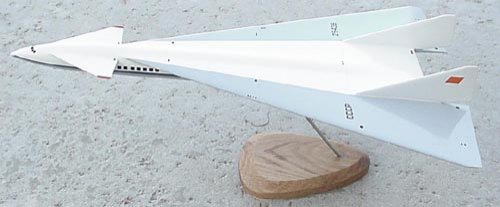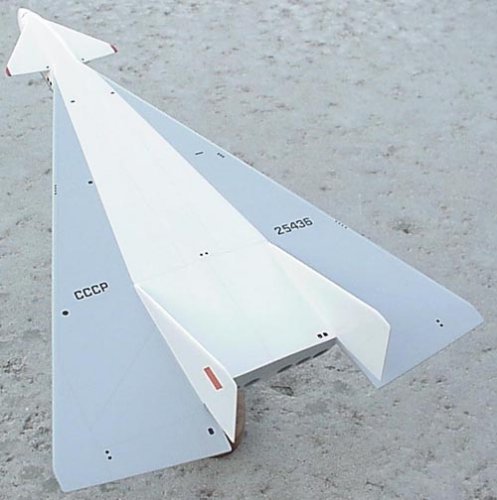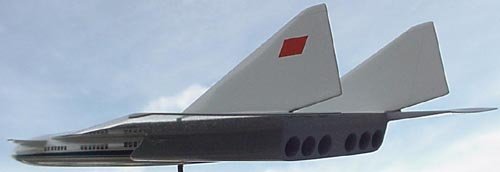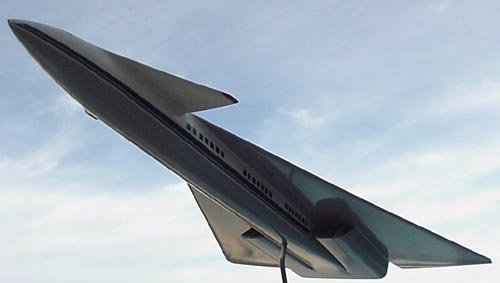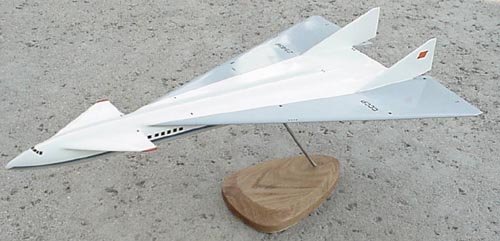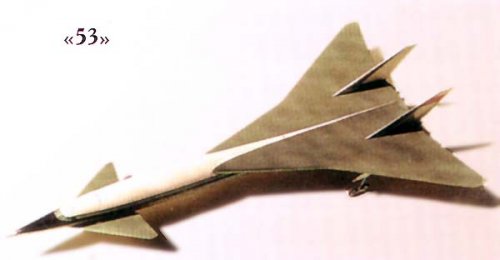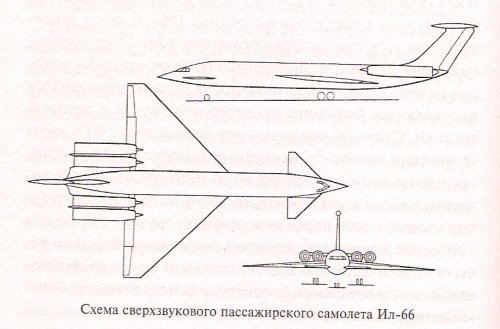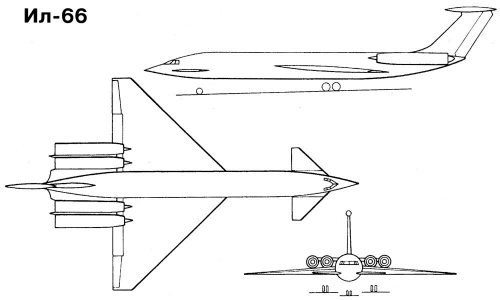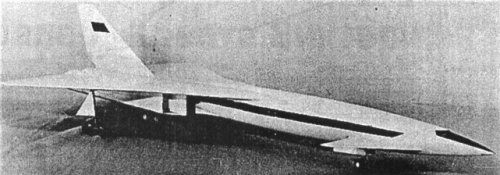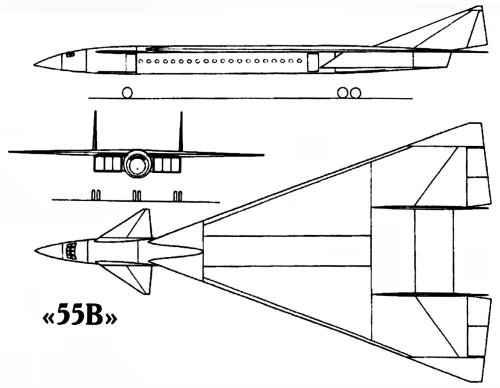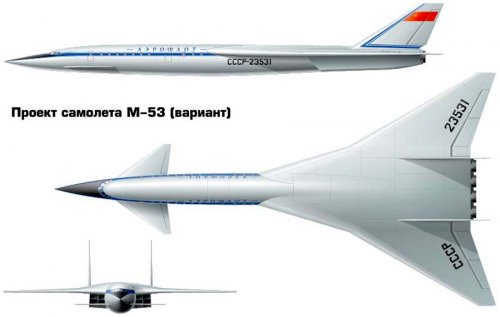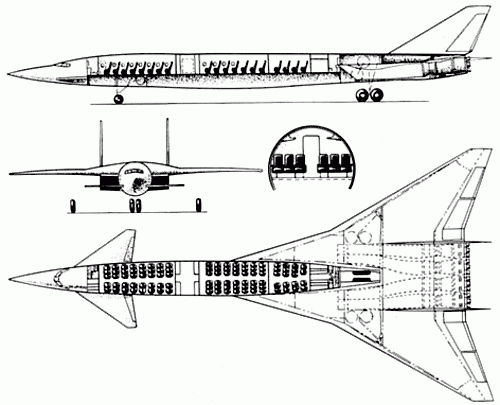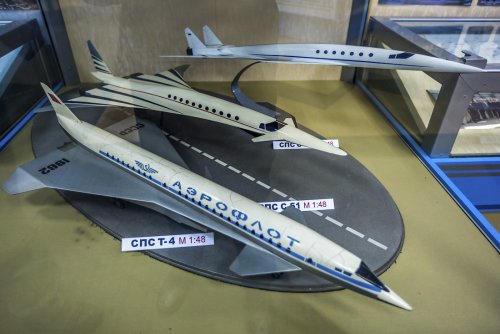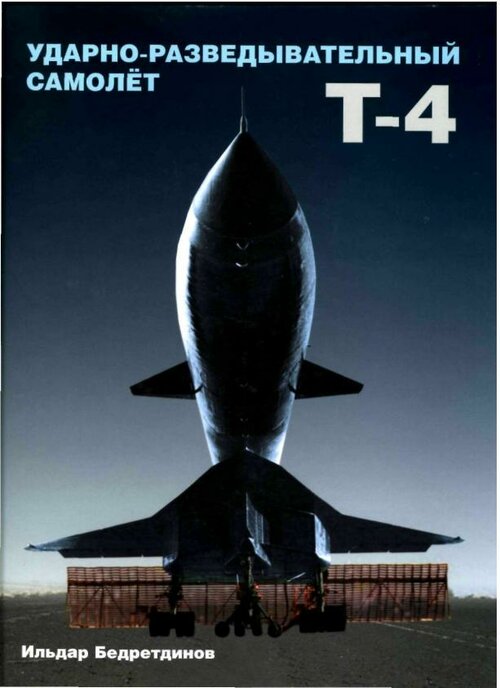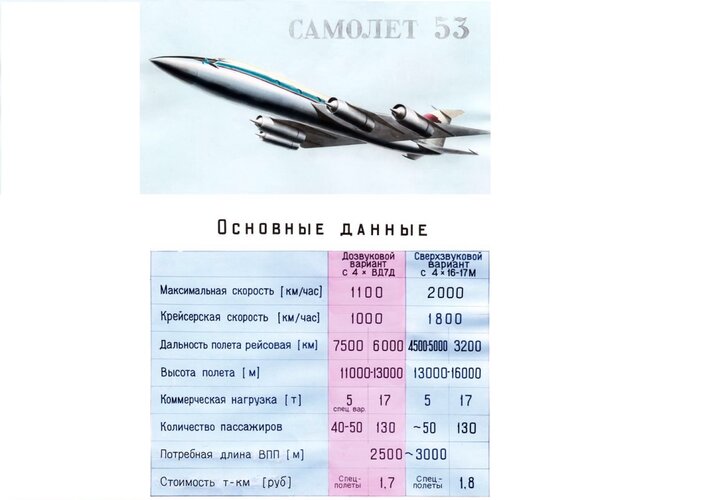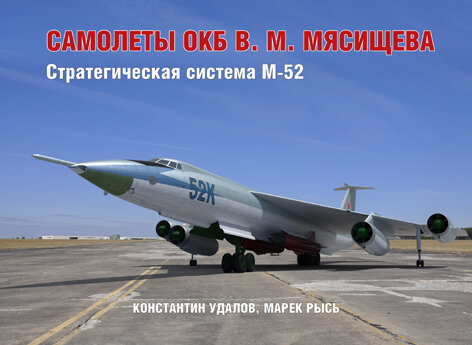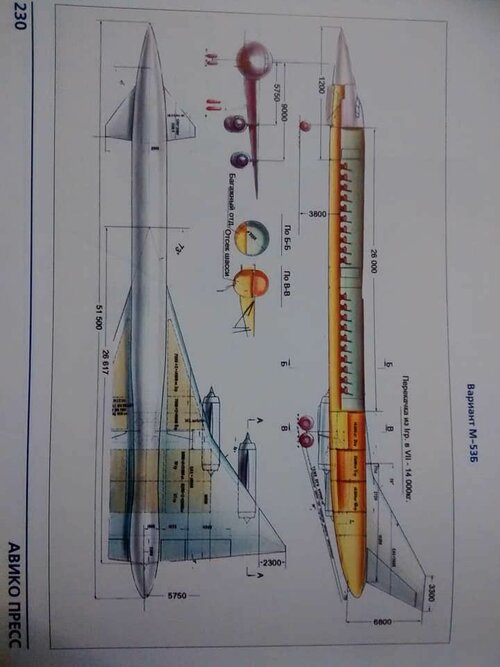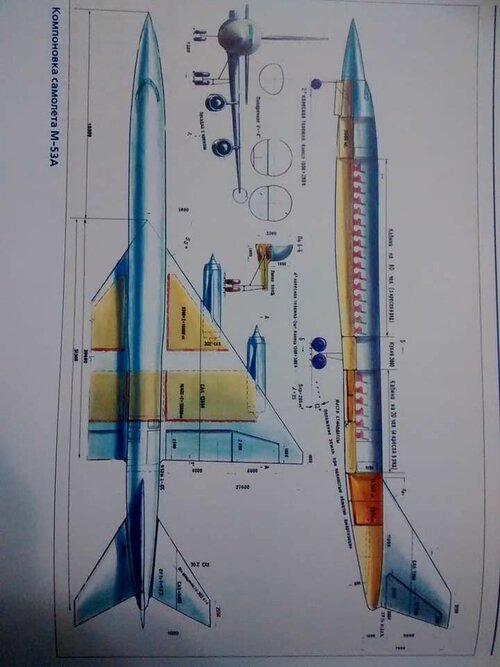1960: A Glance Into A Future
Kryl'ya Rodiny 2/02
It was V M Myasishchev, who was the first in the USSR to proceed with project developments of supersonic airliners. It was at the No. 23 OKB where the first scientific research studies about the requirements for such aircraft were proceeded with.
In 1960, soon after No. 23 0KB was disbanded, development of such aircraft was attempted at the S V Ilyushin OKB. In March 1960, S V Ilyushin’s memorandum, addressed to D F Ustinov (Sov Min deputy chairman), proposed to introduce a project of Il-66 supersonic airliner of steel construction into the experimental aircraft construction plans. The choice of its preliminary project configuration demonstrated the strong influence of the then prevalent preference for a delta wing and for tail-mounted engines.
The preliminary calculations suggested that this aircraft canard configuration carrying between 60 and 100 passengers, at Mach 3 would attain 7,200 km (7,300 km according to other sources) technical range. The whole development process was to be realised in 5 years.
Considering all the evidence available, the preliminary studies carried out in the defunct No. 23 OKB have germinated only at No. 156 OKB and TsAGI. This is only probable explanation for such highly optimistic performance parameters, which run well in counter to the technologies, then available in USSR. Even from today’s viewpoint, it was indeed a daring project, more based upon emotions of its creators. At onset of the sixties, the resources for its realisation were absent.
It was not surprising, that in that year, its designers in the subsequent project reduced its maximum speed by almost 1,000 km/h. This change was to enable the use of conventional light alloys in place of the steel construction.
The preliminary calculations suggested that construction of Il-72 airliner is feasible, carrying 40-60 passengers over a 4,000 to 4,500 km range at Mach 2.2. The OKB technical council evaluated this project at the start of 1961, but this project ended at this stage. Regrettably, no information was so far found about its configuration.
There was a simple cause for this decision. In that year, the No. 136 OKB of A N Tupolev was preparing a similar project. it utilised the results, achieved in the abortive project of Tu-135 supersonic combat aircraft.
One of difficult problems, baring the path towards development of a supersonic airliner is that of the power unit choice. In 1960, the RD 16-17 and RD-17-l 17F turbojet engines were under development The then most advanced was the Kuznetsov NK-6 by-pass engine of 20,000 kg take-off thrust, deemed as most suitable for a supersonic airliner. This engine was to be installed in the Tu-135.
It appears that the condition, requiring the commonality between the military and civilian aircraft projects produced its results, so the GVF leadership supported the Tupolev’s viewpoint. Therefore it was necessary to develop a special engine - the NK-144. How this history ended is well known.. The ll-66 project is of certain interest as it did reflect the viewpoint of this Ilyushin OKB towards design of aircraft of this category.

